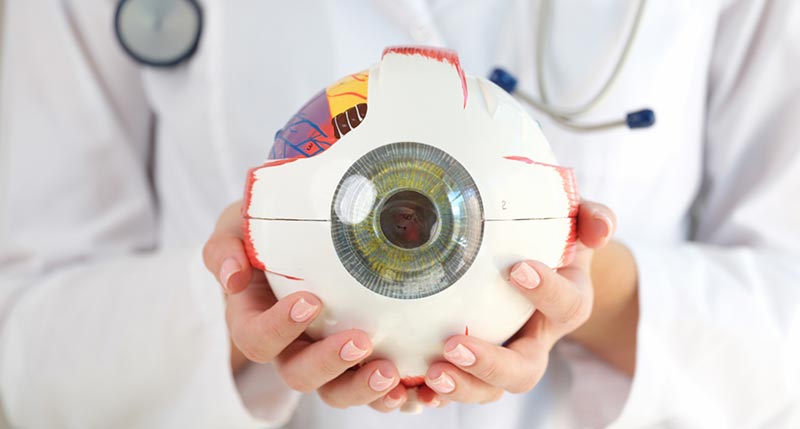Top Cardiologist in Andalusia: Locate Specialist Clinics Near You
Top Cardiologist in Andalusia: Locate Specialist Clinics Near You
Blog Article
The Advantages And Disadvantages of Different Refractive Surgeries for Improved Eyecare

LASIK Surgical Treatment
LASIK surgical procedure is a commonly done refractive treatment that intends to remedy vision problems such as nearsightedness, farsightedness, and astigmatism. This medical technique has actually obtained appeal due to its performance in giving individuals with clearer vision and reducing their dependence on glasses or get in touch with lenses. During the treatment, a slim flap is created on the cornea, and a laser is utilized to improve the underlying tissue, fixing the refractive mistake. The flap is then rearranged, enabling for quick healing and minimal discomfort for the person.
One of the primary advantages of LASIK surgical treatment is the fast renovation in vision experienced by numerous patients. A lot of people discover a substantial enhancement in their eyesight shortly after the treatment, with marginal downtime required for recovery. In addition, LASIK is understood for its high success rate and reduced incidence of problems when done by knowledgeable cosmetic surgeons. Like any kind of medical procedure, LASIK also brings some risks, including completely dry eyes, glare, halos, and under or overcorrection of vision. It is crucial for individuals thinking about LASIK surgery to undertake a complete evaluation by an eye treatment expert to establish if they appropriate prospects for the treatment.
PRK Procedure
The PRK treatment, also known as Photorefractive Keratectomy, is a kind of refractive surgical procedure that intends to deal with vision issues similar to LASIK surgical treatment. Unlike LASIK, which involves developing a flap in the cornea, PRK functions on the surface layer of the cornea.
One of the advantages of PRK over LASIK is that it removes the risk of flap-related problems given that no flap is created during the surgery. This can be helpful for individuals with thin corneas or those entailed in get in touch with sports where eye injury is an opportunity. The recovery time for PRK is generally longer compared to LASIK, as the outer layer of the cornea requires time to regenerate after the procedure. Despite the longer recuperation duration, PRK can be an ideal alternative for people seeking vision modification surgical procedure.
SMILE Surgical Treatment
A cutting-edge refractive surgical procedure method acquiring popularity in the area of ophthalmology is SMILE Surgery. Tiny Cut Lenticule Extraction (SMILE) is a minimally invasive procedure that deals with vision by improving the cornea using a femtosecond laser. Unlike traditional LASIK surgery, SMILE Surgical procedure includes creating a little cut in the cornea to remove a lenticule, which causes much less interruption to the corneal structure see here and possibly much faster recovery times.
One of the main benefits of SMILE Surgical treatment is its capability to treat nearsightedness (nearsightedness) and astigmatism with high precision, leading to superb aesthetic results for people. The minimally intrusive nature of the procedure likewise lowers the danger of complications such as completely dry eye disorder, making it a favorable choice for individuals looking for refractive surgery.

LASEK Method
Having discovered the advantages and navigate to these guys factors to consider of SMILE Surgical procedure, one more notable refractive surgical treatment strategy worth examining is the LASEK Technique. LASEK, which stands for Laser-Assisted Subepithelial Keratectomy, is a kind of laser eye surgical procedure that intends to deal with refractive mistakes such as nearsightedness (nearsightedness), hyperopia (farsightedness), and astigmatism.
Unlike LASIK, LASEK does not entail developing a corneal flap. Rather, throughout a LASEK treatment, the doctor makes use of a diluted alcohol remedy to loosen the thin external layer of the cornea, known as the epithelium. This layer is then gently moved aside to allow the laser to improve the underlying corneal cells. Once the cornea has actually been reshaped to the wanted level, the epithelial layer is repositioned.
One of the main benefits of LASEK is that it can be suitable for individuals with slim corneas who might not be excellent prospects for LASIK. Furthermore, LASEK usually leads to minimal post-operative discomfort and a quicker healing time contrasted to PRK. Nonetheless, the aesthetic recovery process with LASEK may be slightly longer than with LASIK.
Implantable Contact Lenses
Implantable Contact Lenses supply a long-lasting vision improvement remedy for people looking for an alternative to traditional call lenses or glasses. These lenses, also known as phakic intraocular lenses, are surgically inserted right into the eye to correct refractive mistakes such as nearsightedness (nearsightedness), hyperopia (farsightedness), and astigmatism. cardiologist andalusia. Unlike traditional contact lenses that rest on the surface of the eye, implantable call lenses function within the eye itself, supplying clear vision without the requirement for everyday maintenance or removal
Among the vital benefits of implantable get in touch with lenses is their durability. As soon as put, they can remain in the eye forever, offering consistent and secure vision improvement. In addition, these lenses can be a superb alternative for individuals who are bad prospects for laser eye surgical procedure or who choose a reversible vision correction treatment.
Nevertheless, implantable get in touch with lenses do carry some threats, consisting of the capacity for cataracts or increased eye stress. It is vital for individuals considering this option to seek advice from with an eye treatment expert to my site determine if implantable call lenses are the right option for their specific demands and eye health and wellness.
Conclusion
In final thought, each type of refractive surgical treatment has its own benefits and disadvantages. LASIK surgical procedure is prominent for its quick recuperation time, while PRK procedure may be appropriate for clients with slim corneas.

Generally, SMILE Surgical procedure offers a promising alternative for individuals looking to boost their vision through refractive surgical treatment.
Report this page